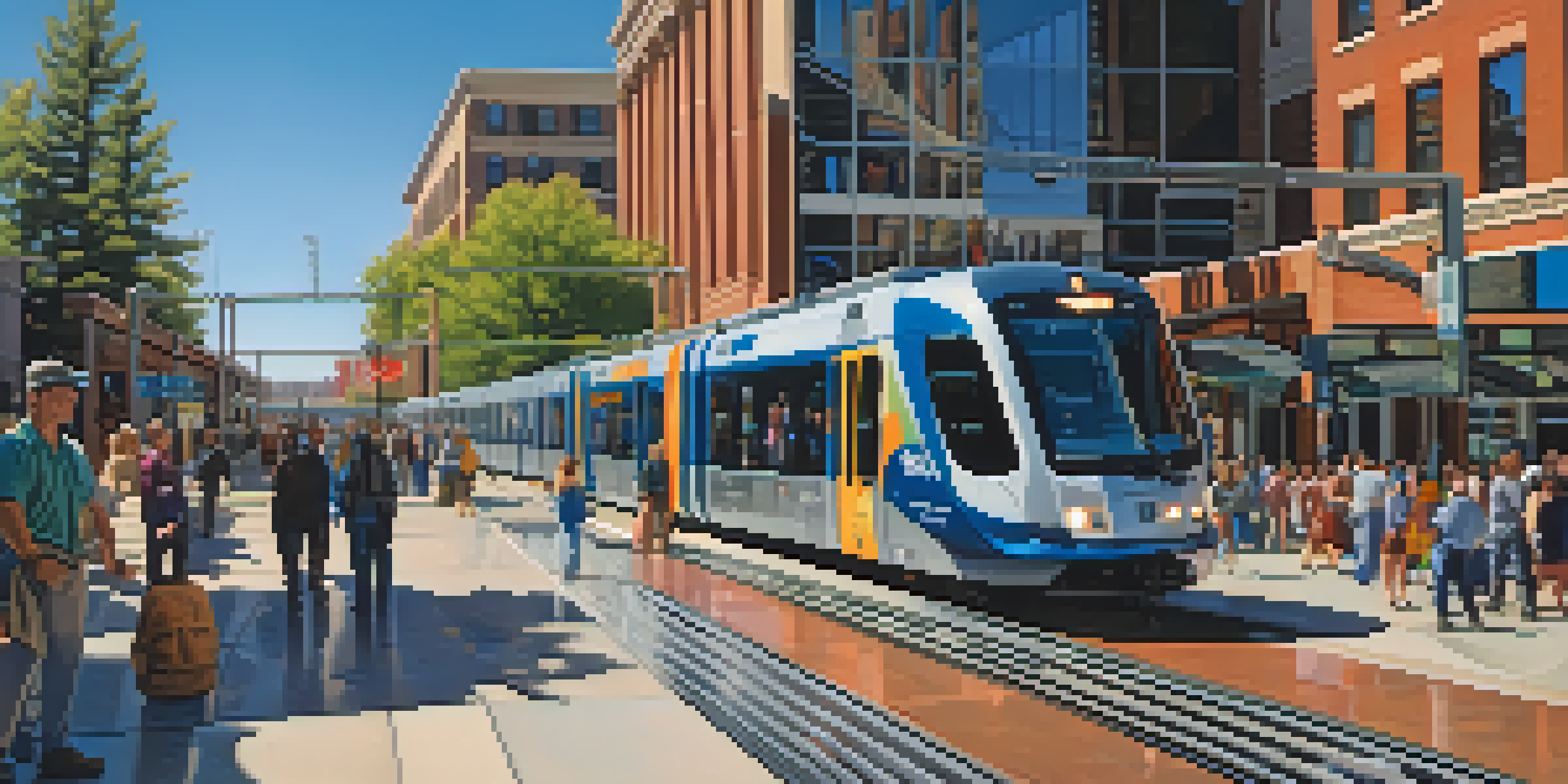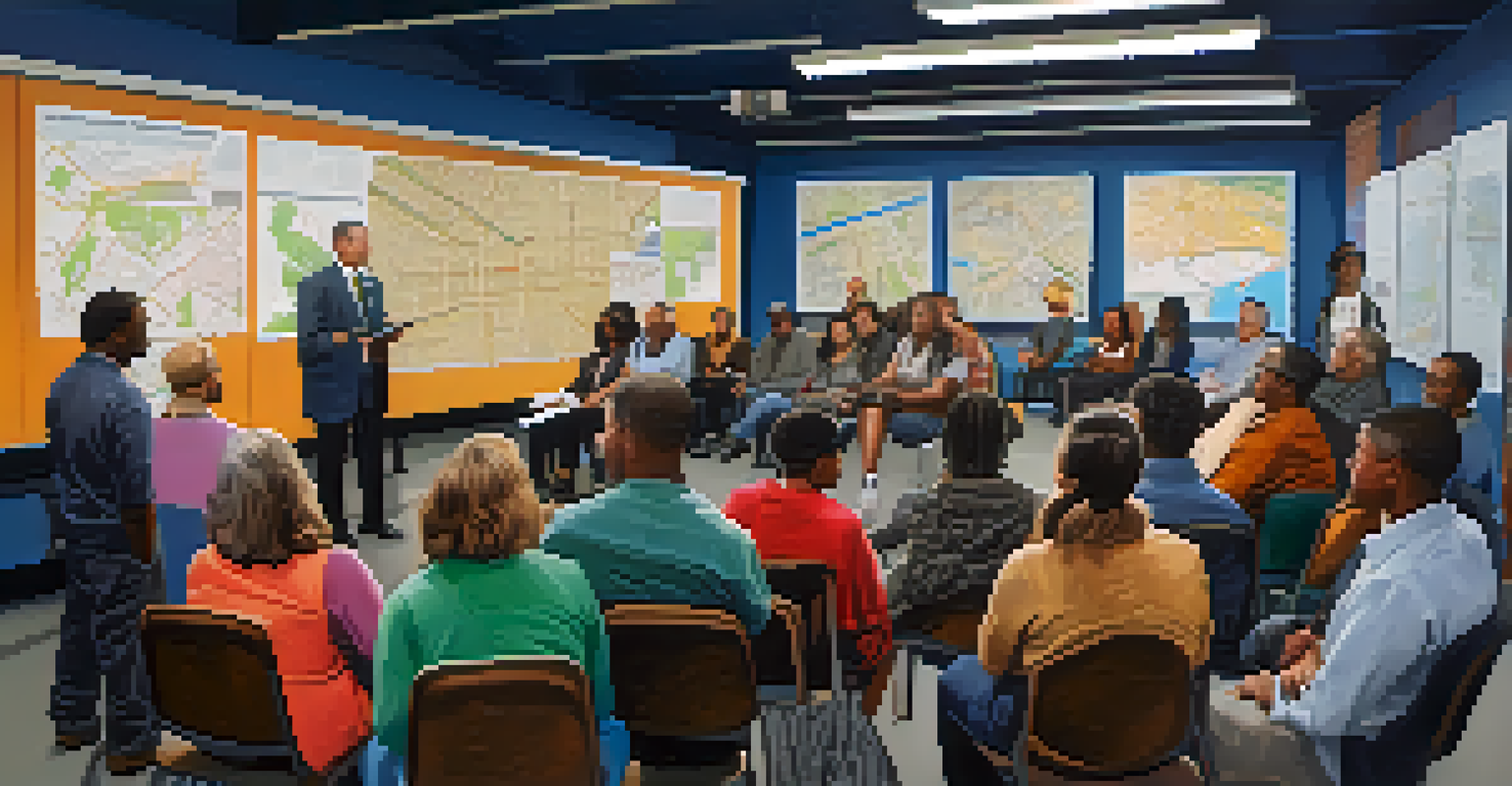Future Developments in Denver's Public Transportation Plans

Overview of Denver's Current Public Transportation System
Denver's public transportation system is a vital part of the city’s infrastructure, connecting residents to jobs, schools, and recreational areas. It includes buses, light rail, and commuter trains that serve both the city and surrounding suburbs. However, as the population continues to grow, the existing system faces challenges in meeting the increasing demand.
Public transportation is the backbone of any city’s infrastructure, connecting people to opportunities and enhancing their quality of life.
Currently, the Regional Transportation District (RTD) manages the transit services, but many commuters have expressed concerns about reliability and coverage. Long wait times and limited routes can make using public transportation less appealing compared to driving. This has prompted city planners to reevaluate and enhance the transit options available.
To address these issues, officials are focusing on expanding the network, improving service frequency, and integrating new technologies. By investing in public transportation, Denver aims to create a more sustainable urban environment, reduce traffic congestion, and provide equitable access for all residents.
Upcoming Light Rail Extensions and Upgrades
One of the most exciting developments in Denver's public transportation is the planned expansion of the light rail system. The new extensions will connect underserved neighborhoods to key areas such as downtown and the airport, ensuring more residents can access essential services and employment opportunities. These upgrades are not just about increasing reach; they also aim to enhance the overall rider experience.

As part of these improvements, the city is investing in modernizing existing stations and tracks to accommodate more trains, thereby reducing wait times. Enhanced safety features and better accessibility for individuals with disabilities will also be prioritized. This commitment to modernization reflects a growing trend toward making public transit more user-friendly and efficient.
Denver's Transit System Needs Upgrades
As the city’s population grows, Denver's public transportation system faces challenges in reliability and coverage, prompting plans for enhancements.
Moreover, these light rail extensions will help promote a shift away from car dependency, encouraging more residents to choose public transportation. With the added convenience and improved infrastructure, the hope is that more people will embrace the light rail as a reliable commuting option.
Integration of Smart Technology into Transit Systems
Technology plays a crucial role in the future of Denver's public transportation. The city plans to implement smart technology solutions that streamline operations and enhance the overall rider experience. This includes real-time tracking of buses and trains, allowing commuters to receive accurate arrival times directly on their smartphones.
Sustainability is no longer a choice but a necessity for urban development, especially in public transit systems.
Additionally, the introduction of mobile payment options will make it easier for passengers to purchase tickets without needing cash or physical cards. These technological advancements not only improve convenience but also encourage more people to opt for public transportation over driving.
Furthermore, the integration of data analytics will enable city planners to identify patterns in ridership and adjust services accordingly. By understanding commuter behavior, Denver can create a more responsive and efficient public transportation system that meets the needs of its growing population.
Sustainability Initiatives in Public Transit Development
As cities worldwide focus on sustainability, Denver is no exception. Future public transportation plans include an emphasis on environmentally friendly practices, such as transitioning to electric buses and adopting energy-efficient technologies. This shift not only reduces the carbon footprint of the transit system but also contributes to cleaner air in the city.
Moreover, Denver is exploring partnerships with renewable energy providers to power transit facilities and vehicles. By investing in sustainable energy sources, the city aims to create a more resilient public transportation network that aligns with its climate goals. This initiative not only benefits residents but also serves as a model for other urban areas looking to innovate.
Smart Technology to Improve Transit
The integration of smart technology, including real-time tracking and mobile payments, aims to enhance the overall rider experience in Denver.
Additionally, public awareness campaigns will help educate residents about the environmental benefits of using public transit. By fostering a culture of sustainability, Denver hopes to inspire more people to make environmentally conscious commuting choices.
Community Engagement in Transit Planning Processes
Community input is essential in shaping the future of Denver's public transportation. City planners are actively seeking feedback from residents to ensure that the proposed changes meet the needs of all citizens. Through surveys, public meetings, and workshops, the community has a voice in how the transit system evolves.
This engagement not only helps identify specific areas for improvement but also builds trust between residents and city officials. When people feel heard and involved in the planning process, they are more likely to embrace the changes and support the initiatives. This collaborative approach fosters a sense of ownership among the community, ensuring that the transit system reflects their needs and preferences.
Furthermore, addressing concerns from diverse groups, including low-income residents and those with disabilities, is a priority. Making public transportation accessible and equitable for all is vital in creating a truly inclusive transit network.
Funding Sources for Future Transportation Projects
Funding is a crucial component of any public transportation project, and Denver is exploring various avenues to secure the necessary resources. This includes federal grants, state funding, and public-private partnerships aimed at financing the expansion and enhancement of the transit system. By diversifying funding sources, the city can ensure the sustainability of its transportation initiatives.
Local initiatives, such as ballot measures to increase sales taxes, are also being considered to support transit improvements. Engaging the public in discussions about funding options helps raise awareness about the importance of investing in transportation infrastructure. This transparency fosters community support for financial decisions that impact their daily lives.
Sustainability is a Core Focus
Denver is investing in environmentally friendly practices, such as electric buses, to create a sustainable public transportation network.
Moreover, innovative financing methods, like value capture strategies, are being explored. These approaches leverage the increased property values near transit stations to generate revenue for public transportation projects, providing a win-win situation for both the city and its residents.
The Vision for Denver's Public Transportation Future
Looking ahead, Denver envisions a public transportation system that is efficient, accessible, and environmentally friendly. The goal is to create a network that not only meets the current needs of residents but also anticipates future growth and changes in commuting patterns. By prioritizing innovation and community engagement, the city aims to foster a sense of pride in its transit system.
This vision includes seamless connectivity between different modes of transportation, such as buses, light rail, and bike-sharing programs. Enhancing multimodal options encourages more residents to consider public transit as a viable alternative to driving, thus reducing traffic congestion and improving air quality.

Ultimately, Denver's commitment to developing its public transportation system reflects a broader movement toward sustainable urban living. As the city implements these plans, it hopes to inspire other cities to follow suit, proving that investing in public transit is a critical step toward creating vibrant, livable communities.